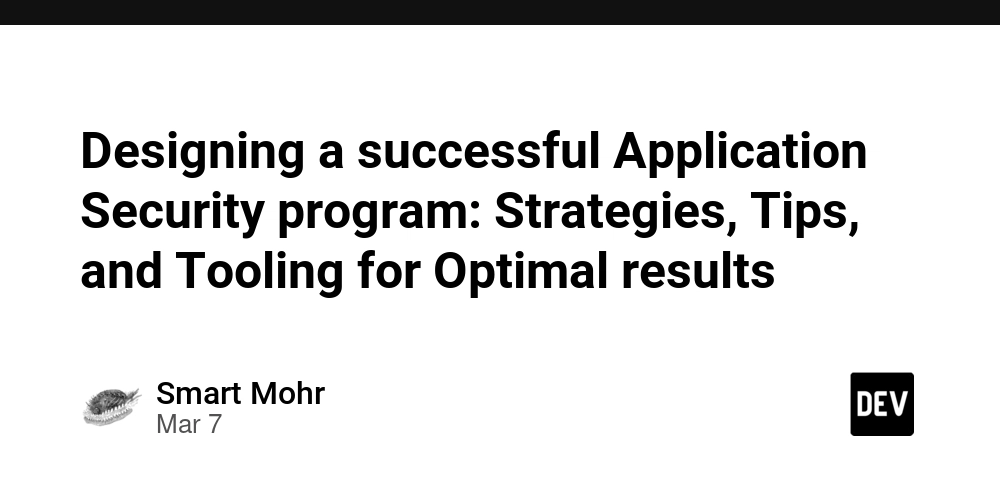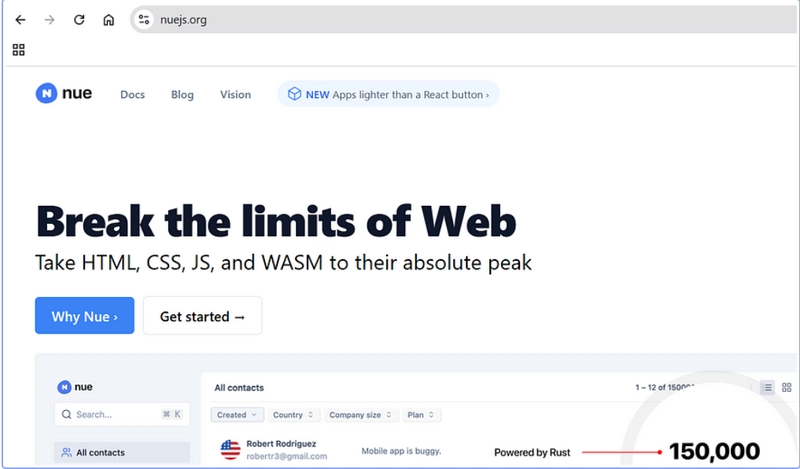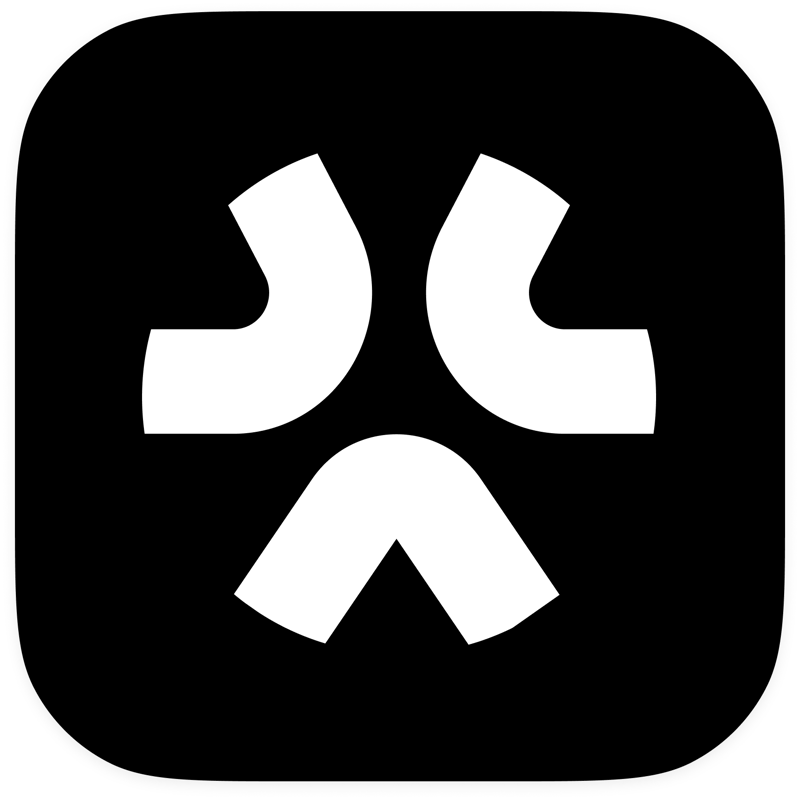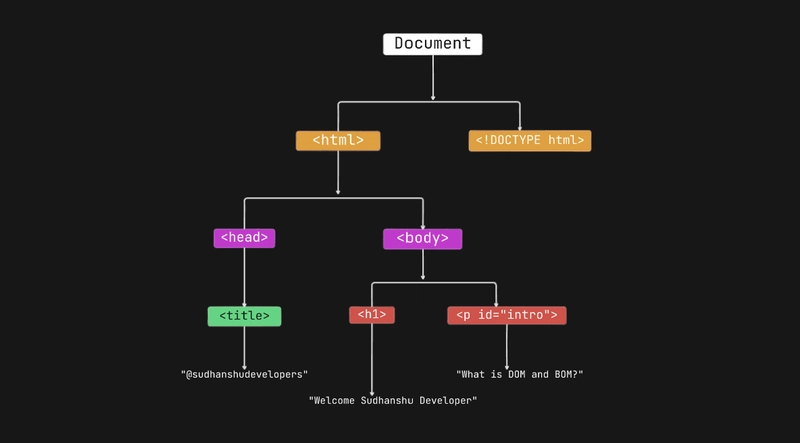Designing a successful Application Security program: Strategies, Tips, and Tooling for Optimal results
Understanding the complex nature of modern software development necessitates a robust, multifaceted approach to application security (AppSec) which goes far beyond just vulnerability scanning and remediation. A proactive, holistic strategy is required to incorporate security into every phase of development. The constantly evolving threat landscape and the ever-growing complexity of software architectures are driving the necessity for a proactive, comprehensive approach. This comprehensive guide explains the key elements, best practices and the latest technologies that make up an extremely efficient AppSec program that allows organizations to safeguard their software assets, reduce risks, and foster the culture of security-first development. A successful AppSec program is built on a fundamental change in perspective. Security must be considered as a vital part of the development process, and not as an added-on feature. This paradigm shift requires a close collaboration between developers, security, operational personnel, and others. It helps break down the silos that hinder communication, creates a sense shared responsibility, and fosters an approach that is collaborative to the security of software that they develop, deploy and maintain. Through embracing a DevSecOps approach, companies can integrate security into the structure of their development processes, ensuring that security considerations are addressed from the earliest stages of ideation and design up to deployment and continuous maintenance. This method of collaboration relies on the development of security standards and guidelines, that provide a structure for secure coding, threat modeling and management of vulnerabilities. These policies should be based upon industry best practices such as the OWASP top ten, NIST guidelines and the CWE. They should be mindful of the specific requirements and risk specific to an organization's application and their business context. The policies can be written down and made accessible to all parties to ensure that companies have a uniform, standardized security strategy across their entire application portfolio. In order to implement these policies and make them relevant to development teams, it's important to invest in thorough security education and training programs. These programs should be designed to equip developers with the know-how and expertise required to create secure code, recognize potential vulnerabilities, and adopt best practices for security throughout the development process. The course should cover a wide range of subjects, such as secure coding and common attacks, as well as threat modeling and secure architectural design principles. The best organizations can lay a strong base for AppSec by encouraging an environment that promotes continual learning, and by providing developers the tools and resources they need to integrate security into their work. Alongside training companies must also establish secure security testing and verification processes to identify and address weaknesses before they are exploited by criminals. This calls for a multi-layered strategy that includes static and dynamic analysis techniques in addition to manual penetration testing and code reviews. Static Application Security Testing (SAST) tools are able to analyze the source code to identify vulnerable areas, such as SQL injection cross-site scripting (XSS) and buffer overflows, early in the development process. Dynamic Application Security Testing tools (DAST) are on the other hand can be used for simulated attacks on applications running to find vulnerabilities that may not be found by static analysis. These tools for automated testing can be extremely helpful in finding vulnerabilities, but they aren't a panacea. Manual penetration tests and code reviews conducted by experienced security experts are crucial to identify more difficult, business logic-related weaknesses that automated tools may miss. Combining automated testing with manual validation allows organizations to gain a comprehensive view of their security posture. They can also determine the best way to prioritize remediation actions based on the magnitude and impact of the vulnerabilities. To enhance the efficiency of the effectiveness of an AppSec program, businesses should take into consideration leveraging advanced technology like artificial intelligence (AI) and machine learning (ML) to augment their security testing and vulnerability management capabilities. AI-powered tools can examine huge quantities of application and code data, identifying patterns as well as anomalies that could be a sign of security problems. These tools also help improve their detection and prevention of emerging threats by gaining knowledge from vulnerabilities that have been exploited and previous attack patterns. A particularly exciting application of AI in AppSec is using code property graphs (CPGs) to enable more precise and effective vulnerability detect

Understanding the complex nature of modern software development necessitates a robust, multifaceted approach to application security (AppSec) which goes far beyond just vulnerability scanning and remediation. A proactive, holistic strategy is required to incorporate security into every phase of development. The constantly evolving threat landscape and the ever-growing complexity of software architectures are driving the necessity for a proactive, comprehensive approach. This comprehensive guide explains the key elements, best practices and the latest technologies that make up an extremely efficient AppSec program that allows organizations to safeguard their software assets, reduce risks, and foster the culture of security-first development.
A successful AppSec program is built on a fundamental change in perspective. Security must be considered as a vital part of the development process, and not as an added-on feature. This paradigm shift requires a close collaboration between developers, security, operational personnel, and others. It helps break down the silos that hinder communication, creates a sense shared responsibility, and fosters an approach that is collaborative to the security of software that they develop, deploy and maintain. Through embracing a DevSecOps approach, companies can integrate security into the structure of their development processes, ensuring that security considerations are addressed from the earliest stages of ideation and design up to deployment and continuous maintenance.
This method of collaboration relies on the development of security standards and guidelines, that provide a structure for secure coding, threat modeling and management of vulnerabilities. These policies should be based upon industry best practices such as the OWASP top ten, NIST guidelines and the CWE. They should be mindful of the specific requirements and risk specific to an organization's application and their business context. The policies can be written down and made accessible to all parties to ensure that companies have a uniform, standardized security strategy across their entire application portfolio.
In order to implement these policies and make them relevant to development teams, it's important to invest in thorough security education and training programs. These programs should be designed to equip developers with the know-how and expertise required to create secure code, recognize potential vulnerabilities, and adopt best practices for security throughout the development process. The course should cover a wide range of subjects, such as secure coding and common attacks, as well as threat modeling and secure architectural design principles. The best organizations can lay a strong base for AppSec by encouraging an environment that promotes continual learning, and by providing developers the tools and resources they need to integrate security into their work.
Alongside training companies must also establish secure security testing and verification processes to identify and address weaknesses before they are exploited by criminals. This calls for a multi-layered strategy that includes static and dynamic analysis techniques in addition to manual penetration testing and code reviews. Static Application Security Testing (SAST) tools are able to analyze the source code to identify vulnerable areas, such as SQL injection cross-site scripting (XSS) and buffer overflows, early in the development process. Dynamic Application Security Testing tools (DAST) are on the other hand can be used for simulated attacks on applications running to find vulnerabilities that may not be found by static analysis.
These tools for automated testing can be extremely helpful in finding vulnerabilities, but they aren't a panacea. Manual penetration tests and code reviews conducted by experienced security experts are crucial to identify more difficult, business logic-related weaknesses that automated tools may miss. Combining automated testing with manual validation allows organizations to gain a comprehensive view of their security posture. They can also determine the best way to prioritize remediation actions based on the magnitude and impact of the vulnerabilities.
To enhance the efficiency of the effectiveness of an AppSec program, businesses should take into consideration leveraging advanced technology like artificial intelligence (AI) and machine learning (ML) to augment their security testing and vulnerability management capabilities. AI-powered tools can examine huge quantities of application and code data, identifying patterns as well as anomalies that could be a sign of security problems. These tools also help improve their detection and prevention of emerging threats by gaining knowledge from vulnerabilities that have been exploited and previous attack patterns.
A particularly exciting application of AI in AppSec is using code property graphs (CPGs) to enable more precise and effective vulnerability detection and remediation. view details CPGs provide a comprehensive representation of an application's codebase that not only captures its syntactic structure but also complex dependencies and connections between components. AI-driven tools that leverage CPGs can provide an analysis that is context-aware and deep of the security of an application, and identify vulnerabilities which may be missed by traditional static analyses.
https://www.youtube.com/watch?v=vZ5sLwtJmcU CPGs are able to automate the remediation of vulnerabilities making use of AI-powered methods to perform repair and transformation of code. AI algorithms can create targeted, context-specific fixes by studying the semantic structure and characteristics of the vulnerabilities identified. This helps them identify the root cause of an issue rather than dealing with its symptoms. This method does not just speed up the remediation but also reduces any chances of breaking functionality or creating new weaknesses.
Another key aspect of an efficient AppSec program is the incorporation of security testing and validation into the continuous integration and continuous deployment (CI/CD) process. Automating security checks, and including them in the build-and-deployment process enables organizations to identify weaknesses early and stop them from reaching production environments. The shift-left security method permits more efficient feedback loops and decreases the amount of time and effort required to identify and fix issues.
To attain the level of integration required, organizations must invest in the proper infrastructure and tools to help support their AppSec program. This does not only include the security testing tools but also the underlying platforms and frameworks that facilitate seamless integration and automation. Containerization technologies like Docker and Kubernetes are able to play an important role in this regard by giving a consistent, repeatable environment for running security tests, and separating the components that could be vulnerable.
Effective tools for collaboration and communication are just as important as technical tooling for creating the right environment for safety and helping teams work efficiently together. Issue tracking systems like Jira or GitLab can assist teams to identify and address the risks, while chat and messaging tools such as Slack or Microsoft Teams can facilitate real-time communication and sharing of knowledge between security experts and development teams.
https://ismg.events/roundtable-event/denver-appsec/ The success of an AppSec program does not rely only on the tools and techniques used, but also on people and processes that support them. To create a culture of security, you need the commitment of leaders, clear communication and the commitment to continual improvement. By instilling a sense of shared responsibility for security, encouraging open dialogue and collaboration, and providing the appropriate resources and support to create a culture where security isn't just a box to check, but an integral component of the development process.
In order for their AppSec program to stay effective over the long term companies must establish meaningful metrics and key-performance indicators (KPIs). These KPIs will help them track their progress and identify improvements areas. The metrics must cover the entire lifecycle of an application, from the number and type of vulnerabilities found in the initial development phase to the time it takes to correct the issues to the overall security measures. By constantly monitoring and reporting on these metrics, businesses can show the value of their AppSec investments, spot patterns and trends, and make data-driven decisions regarding the best areas to focus their efforts.
Moreover, organizations must engage in ongoing education and training efforts to stay on top of the ever-changing threat landscape and the latest best methods. This might include attending industry-related conferences, participating in online courses for training and collaborating with outside security experts and researchers to stay on top of the latest developments and methods. By cultivating an ongoing training culture, organizations will ensure their AppSec programs remain adaptable and capable of coping with new threats and challenges.
Finally, it is crucial to recognize that application security isn't a one-time event but a continuous process that requires constant dedication and investments. It is essential for organizations to constantly review their AppSec strategy to ensure that it remains relevant and affixed to their objectives as new technology and development techniques emerge. By adopting a continuous improvement mindset, encouraging collaboration and communication, as well as making use of advanced technologies like CPGs and AI companies can develop a robust and adaptable AppSec program that will not only safeguard their software assets but also enable them to innovate in an increasingly challenging digital landscape.https://ismg.events/roundtable-event/denver-appsec/











































































































































































![[The AI Show Episode 142]: ChatGPT’s New Image Generator, Studio Ghibli Craze and Backlash, Gemini 2.5, OpenAI Academy, 4o Updates, Vibe Marketing & xAI Acquires X](https://www.marketingaiinstitute.com/hubfs/ep%20142%20cover.png)




























































































































![[DEALS] The Premium Learn to Code Certification Bundle (97% off) & Other Deals Up To 98% Off – Offers End Soon!](https://www.javacodegeeks.com/wp-content/uploads/2012/12/jcg-logo.jpg)


![From drop-out to software architect with Jason Lengstorf [Podcast #167]](https://cdn.hashnode.com/res/hashnode/image/upload/v1743796461357/f3d19cd7-e6f5-4d7c-8bfc-eb974bc8da68.png?#)








































































































.png?#)


































_Christophe_Coat_Alamy.jpg?#)
.webp?#)
 (1).webp?#)






































































































![Apple Considers Delaying Smart Home Hub Until 2026 [Gurman]](https://www.iclarified.com/images/news/96946/96946/96946-640.jpg)
![iPhone 17 Pro Won't Feature Two-Toned Back [Gurman]](https://www.iclarified.com/images/news/96944/96944/96944-640.jpg)
![Tariffs Threaten Apple's $999 iPhone Price Point in the U.S. [Gurman]](https://www.iclarified.com/images/news/96943/96943/96943-640.jpg)

































































































































